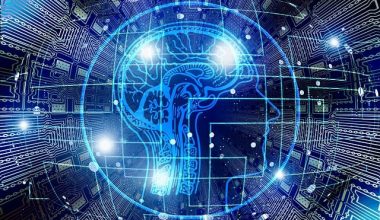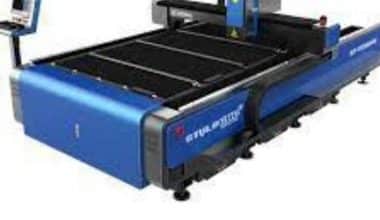In the world of computers, software, and firmware are separate things that each have specialized purposes. Firmware is the permanent software that is included in electrical devices that control hardware functionality at a low level. Even when the power is turned off, it is still present in the device’s memory. In contrast, software includes all programs and applications that are installed on a computer or other device and carry out different duties as directed by the user. Software, as opposed to firmware, may always be changed, updated, and uninstalled. For an understanding of the fundamental mechanics that drive our devices and apps, it is essential to understand the differences between firmware vs software and software update.
Let’s contrast them now.
Firmware vs Software
Despite their apparent similarities, software, and firmware have different functions. The permanent software that is integrated into gadgets like smartphones or smart TVs is referred to as firmware. In addition to providing low-level functionality, it controls the hardware. Software, on the other hand, refers to a broader category of programs and apps that may be downloaded or run on a variety of hardware. The following are definite distinctions between firmware and software.
#1. Functionality and Purpose
In electrical devices, firmware is a sort of software that is indefinitely kept in read-only memory (ROM) or flash memory chips. It gives the device low-level management and functionality and is closely connected to the hardware it manages. The firmware is specifically made to carry out a specific set of tasks, such as managing hardware elements or offering critical functionality to make the device run properly.
Software, on the other hand, is a group of applications, information, and instructions created to carry out particular functions on a computer or other electronic device. Like firmware, the software is not stored permanently in the device’s memory. Instead, it uses the storage of the device, such as a hard disk or solid-state drive, to install and run the program.
#2. Modifiability and Upgradability
Compared to software, firmware is often harder to change or upgrade. Due to firmware’s storage in immutable ROM or flash memory, updating firmware frequently requires special tools or techniques. The software, on the other hand, is often more adaptable and upgradeable. By installing new versions or patches, software makers can quickly modify or upgrade it. Users can update their programs easily since they can distribute software updates electronically.
#3. Performance and Implementation
Direct firmware execution by the device’s hardware occurs at a low level, nearer to the underlying physical components. Due to the direct integration, firmware may operate hardware in an effective and optimized manner, resulting in high-performance operation. The software, on the other hand, is controlled by the virtual machine or CPU of the device. In comparison to firmware, it runs at a higher level and depends on the underlying operating system for hardware abstraction and resource management.
#4. Portability and Compatibility
Firmware is typically created and optimized by developers for certain hardware systems or devices. They closely integrate it with the design of the device, which reduces its portability across other platforms or hardware setups. Firmware may not be compatible with or easily transferrable to other devices or models with differing specs because of its intimate relationship to the hardware.
In contrast, the software is typically more adaptable and compatible with various hardware setups and operating systems. Users are now able to install and utilize the same software application on numerous hardware architectures and operating systems thanks to the designers’ development of it.
#5. Lifespan and Update Frequency
Compared to software, firmware often has a longer lifespan. A hardware device’s firmware is normally developed and integrated by the manufacturer, and it typically remains unmodified for the duration of its useful life.
Software, on the other hand, frequently needs frequent updates and has a shorter lifespan. Software programs are constantly changing to meet new requirements, correct errors, and add features depending on user feedback. Updates from developers frequently come with bug repairs, security patches, performance enhancements, and new features.
Firmware Update
The model and kind of your gadget will determine where the firmware is located. The code is often written in one of the following locations:
- ROM (read-only memory): Computers’ permanent memory storage.
- Erasable Programmable Read-Only Memory, or EPROM memory storage can continue to hold data after the power has been switched off
- USB flash drive: Electronically erasable and rewriteable memory storage
Flash memory is frequently used in more recent gadgets because its code may be updated and reprogrammed as needed. The motherboard, a printed circuit board that is crucial to the operation of your computer, is where the memory storage is often housed in computer hardware. The two main categories of motherboard firmware are UEFI (Unified Extensible Firmware Interface) and BIOS (basic input/output system).
Your device’s BIOS checks to make sure all of its hardware is operating properly. After that, a hard drive is used to store any information regarding these components. While UEFI, a more sophisticated technology, transmits this data to your computer’s operating system. UEFI is preferred by most current computers over BIOS.
What Are Some Of the Benefits of Firmware Update?
You can update your gadget without changing the hardware by using firmware updates. Here are a few of the main advantages of firmware update:
- More attributes
- Improved user encounter
- Enhanced security
By updating the firmware on your device, you can gain access to features and capabilities that were previously unavailable. Improved user experience is a key advantage of the updated firmware. It’s typical for electronics to develop flaws or malfunctions over time that make them more challenging to operate. Finally, firmware updates can shield you from nefarious cybersecurity threats. Every day, the AV-Test Institute identifies about 500,000 different malware variants. When malware enters your system, it has the ability to obtain passwords, log into your accounts, and steal sensitive data. Updates to the firmware fix bugs in the code, lowering the likelihood that hackers will gain access to your system.
Firmware vs Software vs Hardware
Computers are made up of three different components: hardware, software, and firmware. These elements each have unique qualities and functions. Choosing the appropriate software and diagnosing computer problems require an understanding of the key differences between each component of a computer, especially if you work in the technology industry.
What is Firmware? Firmware vs Software vs Hardware
Firmware is a sort of software with a specified function that manufacturers install permanently on a computer or other electrical device. The firmware of a computer may be impacted by specific changes, like an installation or administrative update. In contrast to software, a hardware device’s firmware is installed by the manufacturer during production. These are a few typical instances of firmware:
- The printer’s software
- The computer’s print driver
- The application a manufacturer incorporates into a router
What is Software? Firmware vs Software vs Hardware
Software is made up of the applications and other operating data that a computer system uses to carry out various activities. To deliver a service or a tool, it interacts with the user, the hardware, and the distant hardware. There are primarily two categories of software. Application software executes commands and carries out particular pre-specified tasks that are provided by the program, whereas system software controls the hardware and serves as a platform for it. These software examples are typical ones:
- Online browsers
- Antivirus software
- Program for altering photos
- Word processing software
- Databases
What is Hardware? Firmware vs Software vs Hardware
The term “hardware” describes the actual parts of a computer system. These components can physically break and possibly overheat because they are material. In order to store and execute the instructions that their software supplies, computers have a wide variety of hardware parts. Both software and firmware depend on hardware, which might also consist of other devices. Some examples of hardware are the following components:
- USB stick
- Router
- Iinternal hard drive
- Motherboard
- CPU, or central processing unit
- Mouse
- Video card
Firmware vs. Software vs. Hardware
While hardware, software, and firmware are all necessary for a computer to run effectively, each serves a unique job. Before deciding to troubleshoot a device, it’s helpful to understand how these components vary from one another. Some of the key distinctions between hardware, software, and firmware are listed below:
#1. Characteristics
Software and firmware are both virtual or nonphysical while hardware is by definition physical. Hardware is a tangible thing that, like most other things, may wear out and get damaged.
Software has no physical components because it is virtual. There are significantly fewer resources required to maintain software than hardware because it is information-based and lacks any physical structure.
Contrary to hardware, software may also be updated and changed over time to suit your needs. The information has the ability to persist forever as long as you copy the software to newer hardware. Although it lives on a specific piece of hardware, firmware is also virtual.
#2. Purpose
Each essential element serves a distinct function or usage. The information of each program is stored in hardware, which also contains the software and firmware, until the user is ready to utilize them.
Depending on a user’s professional or personal demands, the specific software applications on their device may change.
Firmware can be used by users to boost hardware performance or speed up computation. It’s not required to buy it separately unless the maker advises you to update it because manufacturers typically sell it with hardware.
#3. Location
Hardware, software, and firmware are all located in different places. Hardware can be quickly replaced by the user and is simple to locate because it is physical equipment.
Firmware and software are often harder to find. Software is typically kept by users on long-term memory devices, such as a hard disk or flash drive.
Typically, firmware is stored in flash ROM (read-only memory). Users can wipe this kind of read-only flash memory if they decide to stop using it. The firmware functions as a controller, enabling software and hardware to interact and carry out commands.
#4. Vulnerability Management
When you consider the amount of sensitive data you might have on your computer, security is crucial. Due to the physical structure of hardware, security breaches are often not a concern.
Users may be able to add additional levels of security on top of the security features that are often integrated into software products. A security strategy is crucial for safeguarding sensitive data since users often transfer data using the software.
Despite the fact that firmware can be harder to hack than software, security incidents can nonetheless happen. A firmware program’s security can be compromised by a variety of malware programs. Firmware along with antivirus software can help keep it secure.
#5. Troubleshooting Processes
When troubleshooting technical issues, you must take into account every component of the technology. Since hardware has a large number of physical components, it could be simpler to identify the problem’s root cause fast. By simply looking at them, you might be able to spot issues like a damaged circuit board or a computer that won’t come on.
Software and firmware are nonphysical, unlike hardware, making troubleshooting them a little trickier. In this case, spending some time gathering data, looking for error codes, or comparing the technical issues to a user manual may help you identify the problem’s root cause. It could be required for you to get in touch with technical assistance or go see the manufacturer if you can’t figure out the problem’s root.
Embedded Firmware vs Software Engineer
When creating embedded systems, firmware and embedded software are combined to produce the code that manages the machine or device and enables it to carry out its particular role. Although embedded software and firmware have many similarities, their functions and roles inside individual embedded systems are very distinct.
What is Embedded Firmware? Embedded Firmware vs Software Engineer
Embedded firmware is a particular kind of computer software that is installed on hardware and offers low-level control for that hardware. Software is implemented in non-volatile memory such as read-only memory (ROM) or electronically erasable programmable read-only memory (EEPROM), which cannot be easily modified or erased (thus the name “firm”) and is often not meant to alter once shipped. In contrast, Flash memory devices, which are much easier to wipe and reprogram and have a larger storage capacity than their ROM/EEPROM predecessors, are now frequently used to store firmware.
The firmware’s main duties include starting a device up and giving it the instructions it needs to run and interact with other hardware components. The firmware is essentially the software that runs on a piece of hardware and manages a CPU and any embedded peripherals in a bigger device.
What is Embedded Software? Embedded Firmware vs Software Engineer
Embedded software is computer code that is loaded into a device’s main memory and used to regulate how the embedded system behaves. Because embedded software is developed particularly for the hardware it runs on, its CPU and memory capabilities are limited by that hardware. Software code changes are necessary for any new hardware modifications. C, C++, Python, Java, JavaScript, and other programming languages can be used to create embedded software. The device’s general operation is managed by embedded software, which enables it to consistently carry out the intended function. Embedded software, as opposed to embedded firmware, manages the device’s higher-level operations, including data processing and communication with other devices.
Is Bios a Software or Firmware?
A ROM chip contains firmware called BIOS, which enables you to access and configure your system at the most fundamental level.
Is Ios a Software or Firmware?
Most talks tend to use the phrases “IOS” and “the firmware” interchangeably. ‘Firmware’ is (semi-)permanent memory, and the recorded routines directly operate from it. IOS is stored in NVRAM but runs from RAM (in most situations).
What Is Firmware vs Software for Dummies?
A sort of software that resides in hardware is firmware. Software refers to any computer application or collection of programs.
Is Firmware Different From OS?
The firmware’s function is to control particular hardware parts. These are therefore unique codes that can only be used to control one device. The operating system is a versatile program that controls the many parts of the computer. Almost all hardware parts are in its control.
Related Posts
- EMBEDDED FINANCE: What Is It & How Does it Work?
- How To Improve Your Memory Naturally (+ Helpful Tips)
- FLASH SALE: Definitive Guide
- 11+ Best Computer Inventory Management Software – 2023 Review & Pricing






